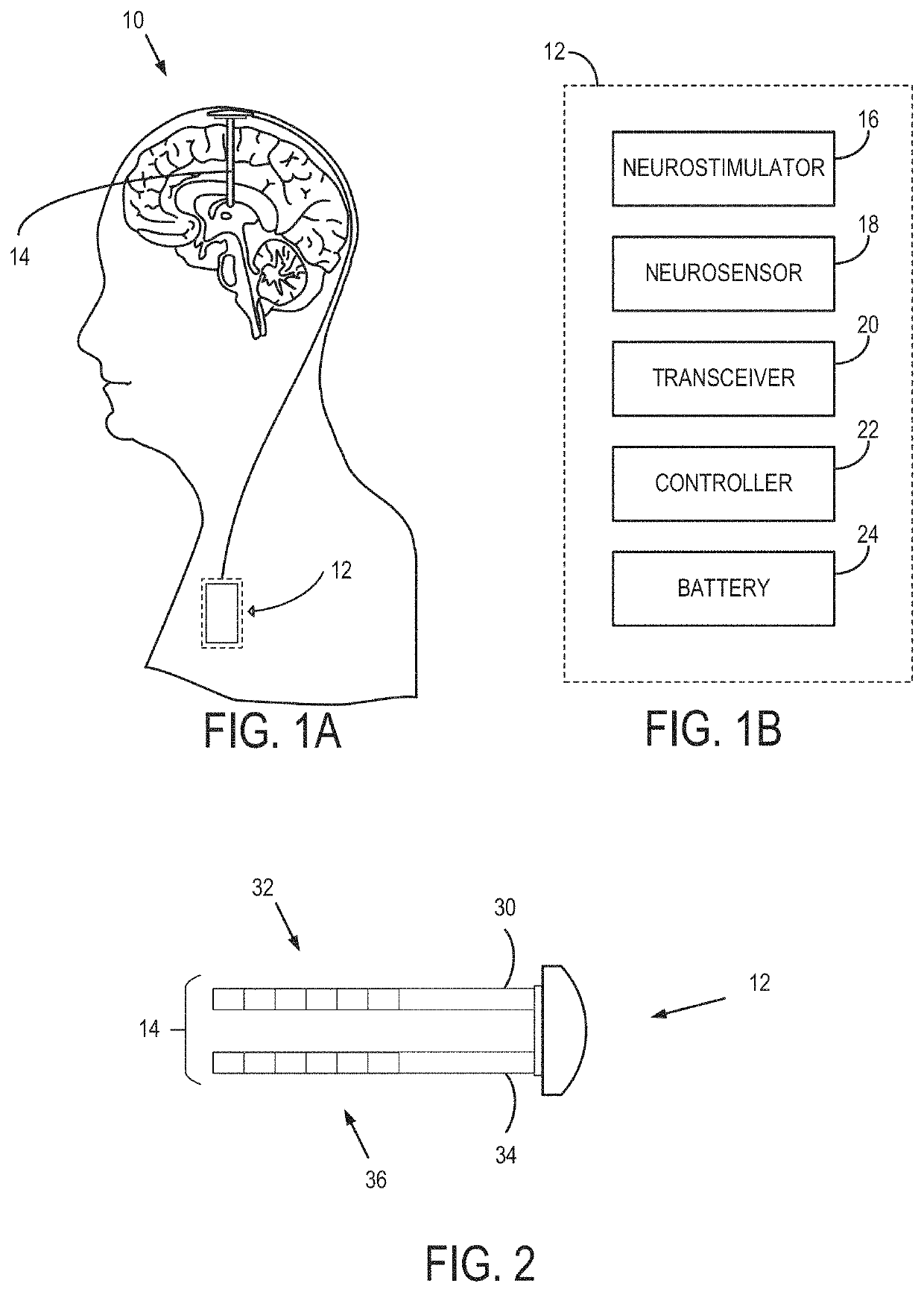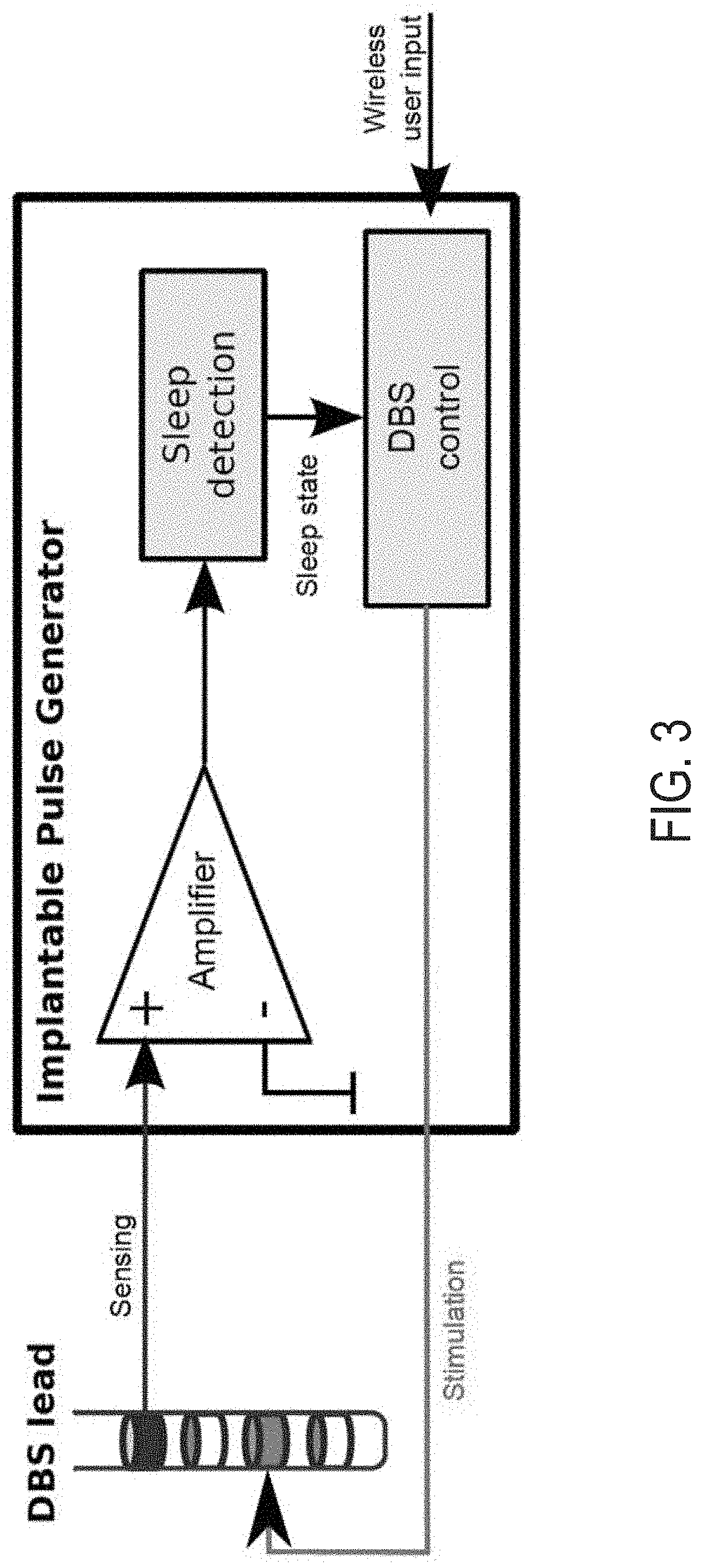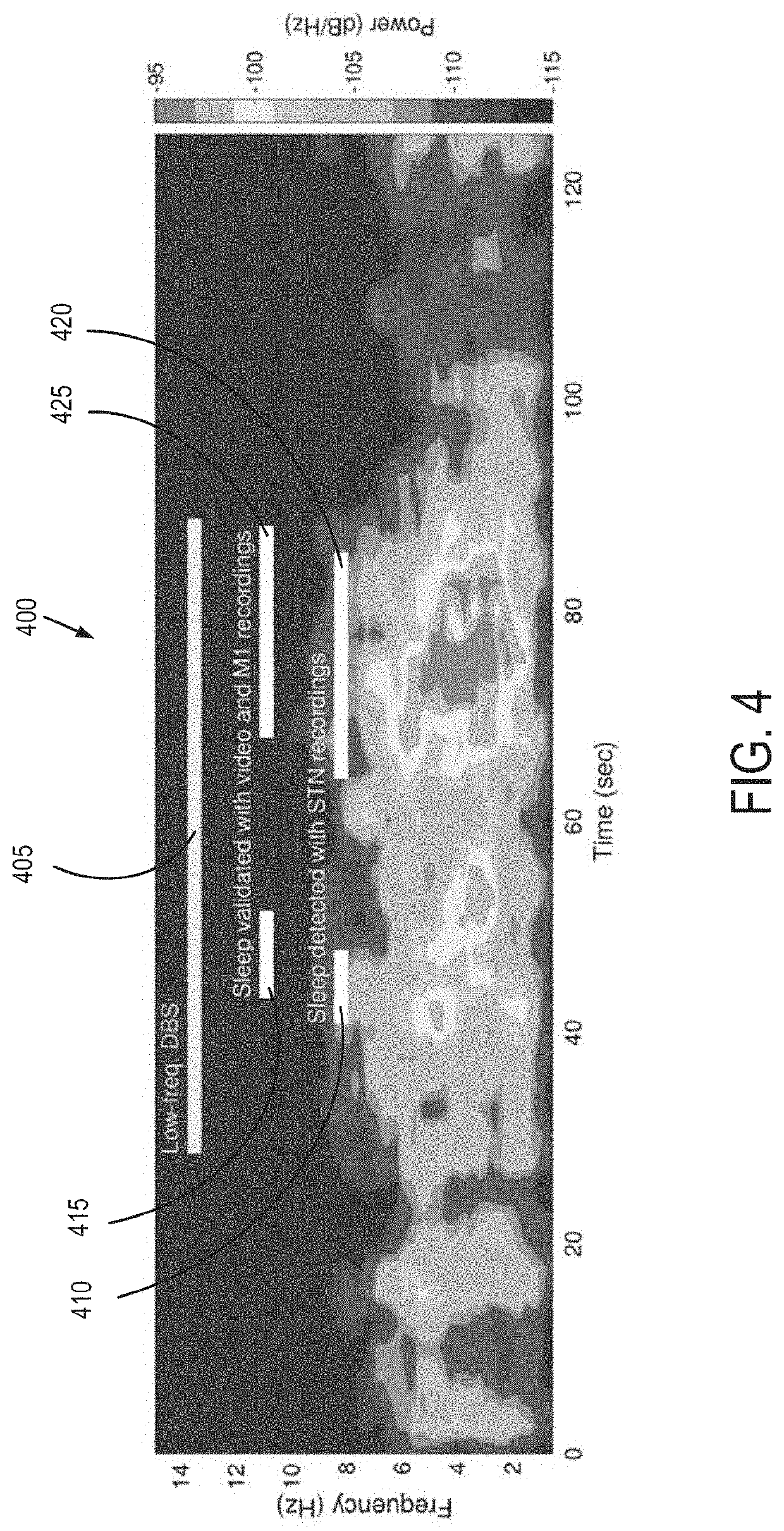Deep brain stimulation system and method with multi-modal, multi-symptom neuromodulation
a brain stimulation and multi-symptom technology, applied in the field of deep brain stimulation system and method with multi-modal, multi-symptom neuromodulation, can solve problems such as discomfort or other symptoms, and achieve the effect of reducing motor symptoms of pd, more effective and less adverse treatments
- Summary
- Abstract
- Description
- Claims
- Application Information
AI Technical Summary
Benefits of technology
Problems solved by technology
Method used
Image
Examples
example
[0114]Data collected in a non-human primate (NHP) during phasic stimulation (as described above) shows that it is possible to modulate low-frequency neural activity in the STN using STN recordings. The upper panel of FIG. 14 is a spectrogram which shows the power of STN local field potentials (LFPs, differential potentials) during phasic stimulation of the STN of a non-human primate, where the STN LFPs were used for feedback. Stimulation was delivered at different phase angles of the STN oscillations, as shown in the lower panel of FIG. 14. The target frequency was Fc=12 Hz, the bandwidth BW=4 Hz, the intra-burst frequency Fi=165 Hz, and the number of pulses for the burst N=4. The oscillatory power at 12 Hz was amplified when the stimulation was delivered at specific phase angles (−90 to 0 degrees) of the neural oscillations. The power was suppressed at approx. 90 degrees. Stimulation evoked potentials phase-locked to the neural oscillations are the primary cause of changes in power...
PUM
 Login to View More
Login to View More Abstract
Description
Claims
Application Information
 Login to View More
Login to View More - R&D
- Intellectual Property
- Life Sciences
- Materials
- Tech Scout
- Unparalleled Data Quality
- Higher Quality Content
- 60% Fewer Hallucinations
Browse by: Latest US Patents, China's latest patents, Technical Efficacy Thesaurus, Application Domain, Technology Topic, Popular Technical Reports.
© 2025 PatSnap. All rights reserved.Legal|Privacy policy|Modern Slavery Act Transparency Statement|Sitemap|About US| Contact US: help@patsnap.com



